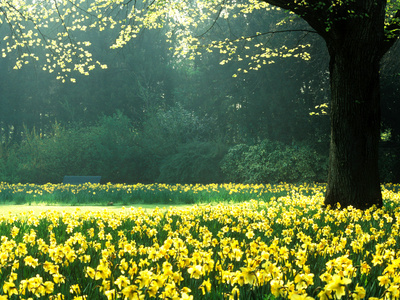Allergy season is once again upon us as Spring starts to roll around. The flowers are beginning to bloom, trees are budding out, and the grass weeds are beginning to thrive again after a long and dormant winter.
Beautiful, unless you are a person who suffers from seasonal hay fever.
Hay fever can make this glorious season of rebirth and renewal a living nightmare. The itchy, runny nose, the sneezing, sore throat, sinus pain and pressure that can lead to a sinus infection, as well as the itchy eyes. Especially in small children.
There are many over the counter pharmaceutical remedies available, but most have undesirable side effects, such as drowsiness from the antihistamines, which can severely limit day to day functioning. BUT, the good thing about allergies is that it can be conquered.
There are a few basic steps that one can take to help eliminate allergy triggers in and around the home.
First, wear a face mask when working in the yard. This prevents pollen from entering the system and airways, thus helping to eliminate the unpleasant reactions. If wearing a face mask is not desirable, then remember that pollen is always at it's worst in the late afternoon/early evening when it is settling back down to the ground. It is best to do any outdoor work prior to noon to avoid the part of the day with the highest pollen count.
Second, wash your hair a lot. Don't have to shampoo, but do wash, because hair, especially long hair, can become a pollen nest, and then going to bed without washing your hair can lead to that pollen being scattered all over the pillow that you rest your face on, leading to unintentional inhaling of pollen spores all night. That makes for a very unpleasant wake up call in the morning!
Third, be on the up-and-up about dust mites. They are tiny, microscopic insects that eat dead skin and excrete feces coated in enzymes from the mite's intestines. This enzyme chemical is a very abundant and very prominent allergy trigger in humans.So, how do we get rid of these microscopic pests that love to camp out in our carpet and bunk in our beds? 1995 Research from Australia indicates that sunlight, or more specifically, the UV rays from the sunlight, is the key factor. Their research found that hanging rugs, bedding, and even pillows outside for at least four hours killed 100% of mites living in them along with their eggs. For rugs and carpets that you cannot take outside, researchers at the University of Virginia found that treating with tannic acid reduced dust mites in carpet by 92%. However, if you have an indoor cat, this may not work because allergens that come from a cat's fur, saliva, and skin may interfere with the effectiveness of tannic acid. For more information, contact Allersearch ADS at 1-800-422-DUST.
Once environmental issues are taken into account, there are a number of herbal and home remedies for seasonal allergies.
#1 - Buy honey from a bee farm local to you and take 1 tsp per day. The pollen in the honey gathered by the bees from the local flora help build a natural immune response to the allergy triggers.
#2 - Sight changes in diet can help tremendously. Try to eliminate mucous forming foods such as dairy, eggs, sugar, white flour, fatty foods, and alcohol.
#3 - General Herbal Remedies for seasonal allergies: Nettle (Urtica dioica) or Elderflower (Sambucus nigra) ~ Make a nettle infusion. Take three to four cups a day for up to three months at a time. Alternatively, make an infusion with one teaspoon of each herb to two cups of water and take daily for up to three months at a time. Also, Baical Skullcap (Scutellaria baicalensis) ~ Make a decoction and take two cups a day.
#3 - General Herbal Remedies for seasonal allergies: Nettle (Urtica dioica) or Elderflower (Sambucus nigra) ~ Make a nettle infusion. Take three to four cups a day for up to three months at a time. Alternatively, make an infusion with one teaspoon of each herb to two cups of water and take daily for up to three months at a time. Also, Baical Skullcap (Scutellaria baicalensis) ~ Make a decoction and take two cups a day.
#4 - Herbal Hay Fever Remedies: Elderflower (Sambucus nigra) ~Make an infusion and take two to three cups a day. Take for a few months before, as well as during, hay fever season for your geographical location.
#5 - Herbal Remedies for Hay Fever Accompanied by the Presence of Mucous: Eyebright (Euphrasia officinalis), Plantain (Plantago major), Goldenrod (Solidago virgaurea), or Boneset (Eupatorium perfoliatum ) ~ Make an infusion with one or a mixture of all of the herbs and drink up to three cups a day. *Note: Use this remedy for especially watery mucous.*
Echinacea (Echinacea spp.), Marsh Mallow (Althaea officinalis), Elderflower (Sambucus nigra), thyme (Thymus vulgaaris) ~ Take one teaspoon of equal parts of each tincture three times daily with warm water.
*Note: Use this remedy for thick yellow/green mucous and sinus congestion.*

No comments:
Post a Comment